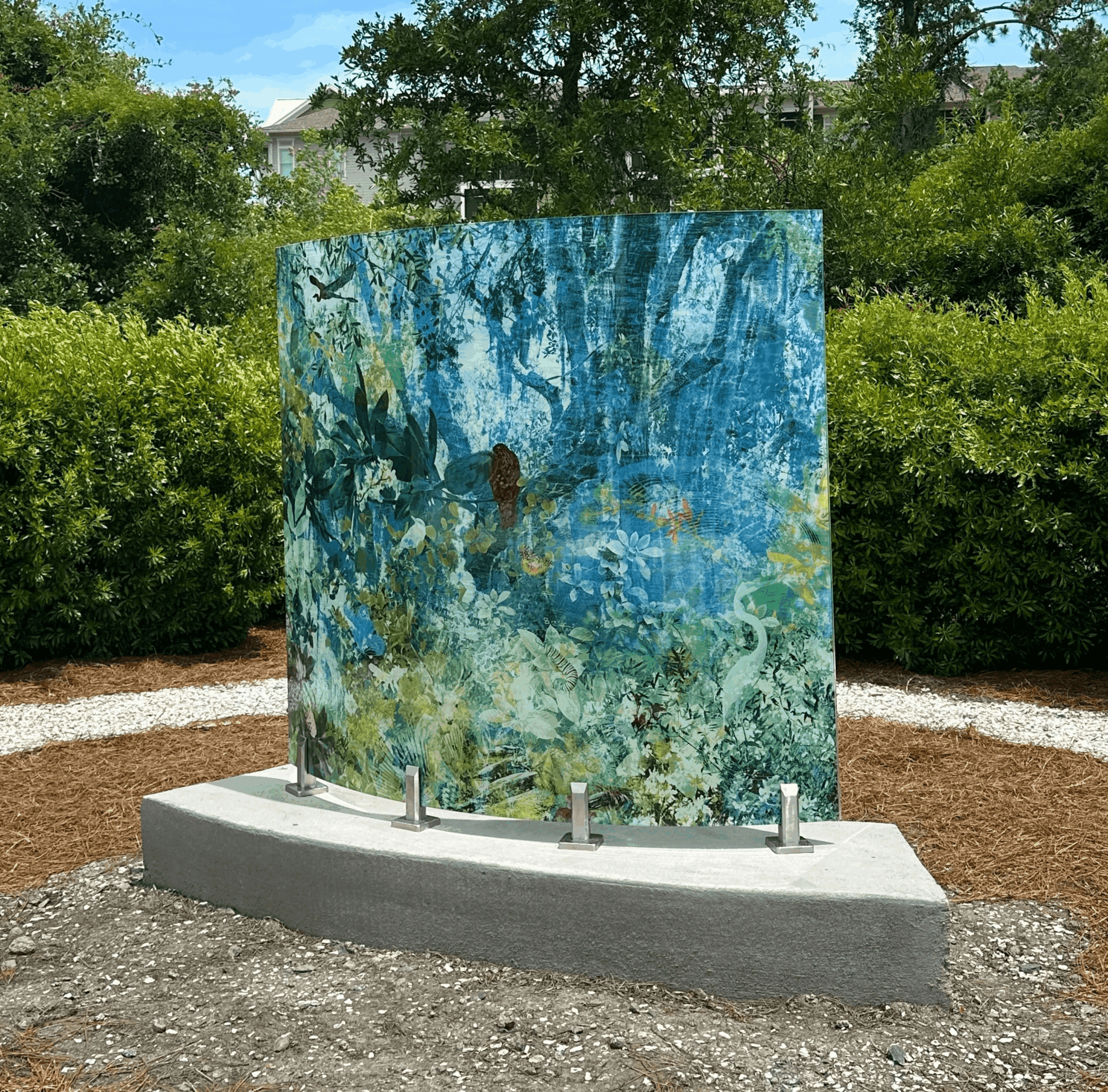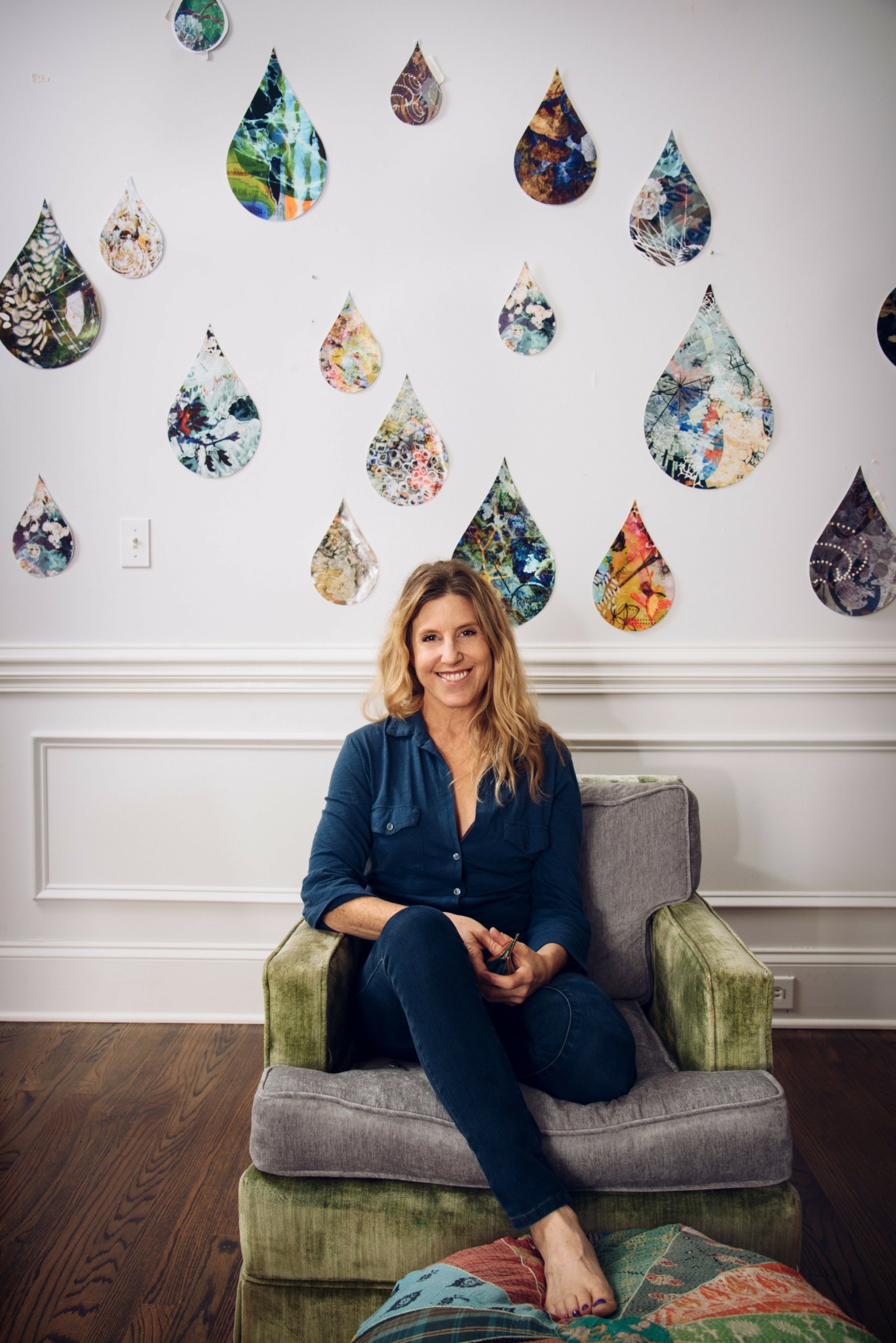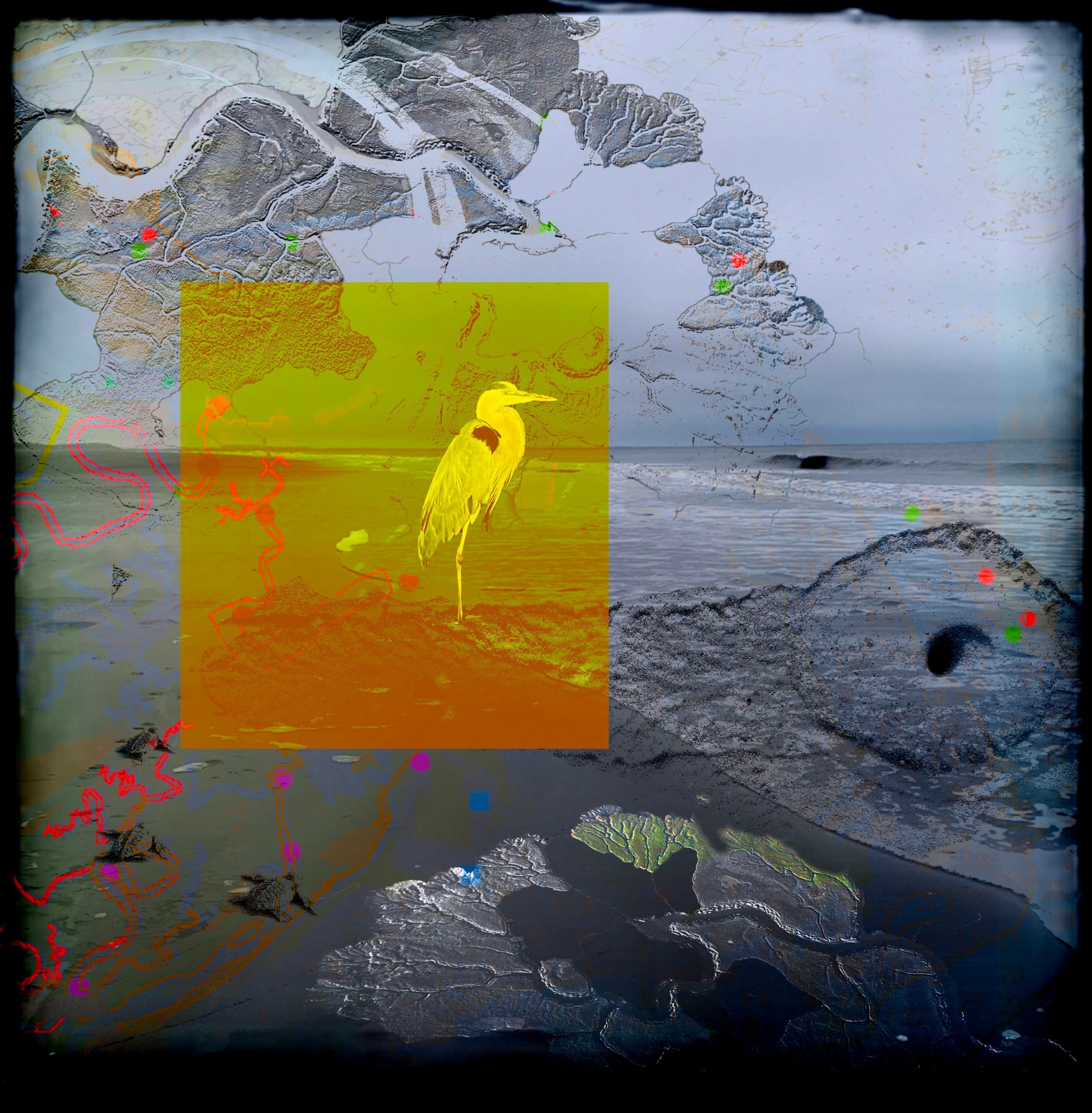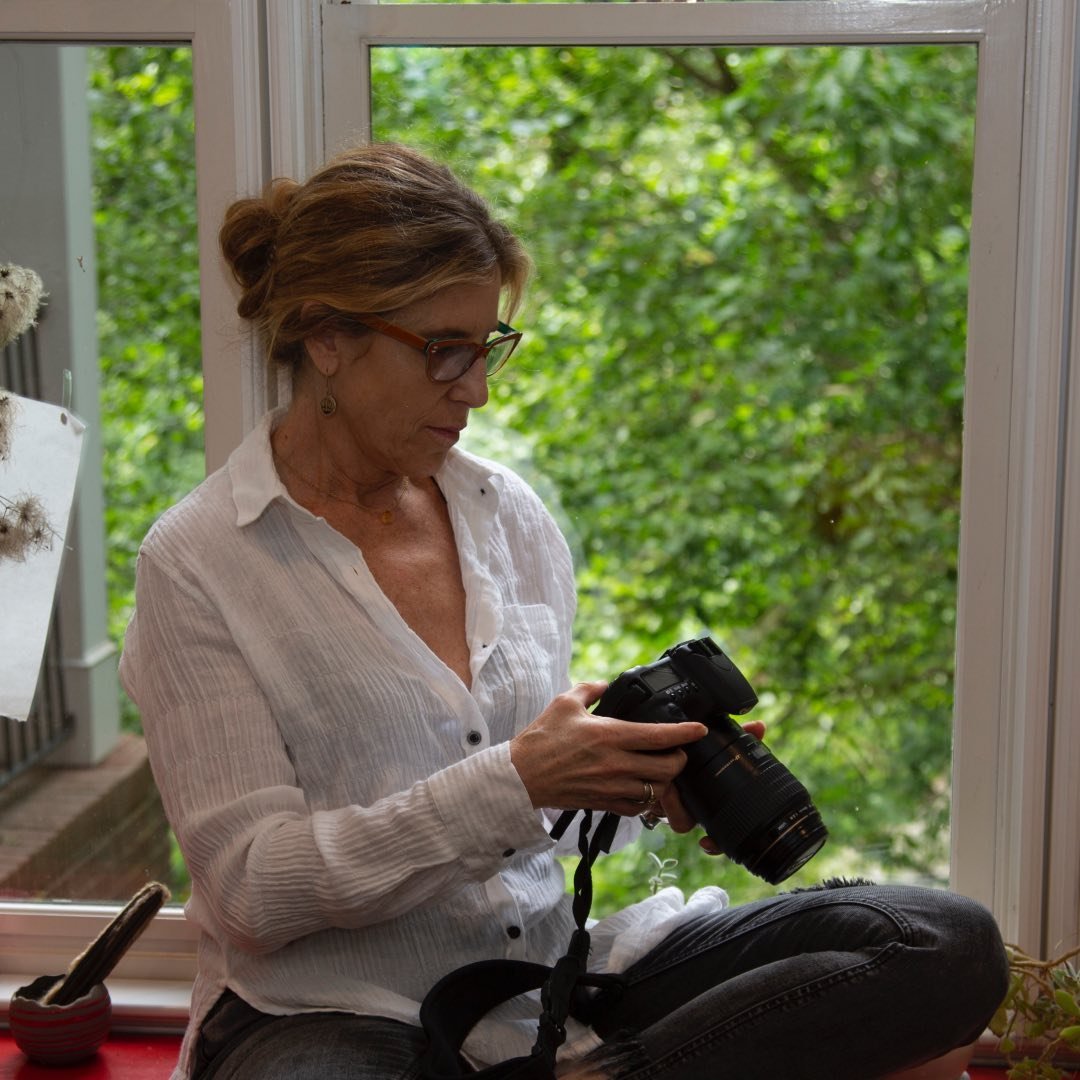We were lucky to catch up with Dana Montlack recently and have shared our conversation below.
Dana, thanks for taking the time to share your stories with us today What’s been the most meaningful project you’ve worked on?
One of the most recent meaningful projects I’ve worked on was the creation and installation of three large-scale glass sculptures at Shelter Cove Community Park on Hilton Head Island. It was a project that brought together everything I care about: environmental storytelling, material experimentation, community, and collaborative process.
It started with research. I had received the Georgia Artists Sea Grant, which allowed me to dive deep into the southeastern coastal region. I spent time walking through the marshes, speaking with biologists, and learning about tidal shifts, erosion, and the marine species native to the area. I photographed everything from micro-textures of plankton to aerial views of the coastline. I became fascinated with the ecological stories embedded in sediment, coral patterns, and marine charts.
This project had a learning curve as well. It marked my first experience working with glass on such a large scale. I partnered with fabricators, engineers, installers, and the Department of Cultural Affairs. Through that process, I came to understand how inherently collaborative and interdisciplinary public art can be. The process extended well beyond personal vision, demanding trust, creative problem-solving, and collective momentum.
What made it so meaningful was not only the final result but the experience itself: the people I met, the knowledge I absorbed, and the relationships that shaped the work. The sculptures are in a public park, fully integrated into the landscape and within reach. People encounter them in their daily lives. They stop, they look closer, and they begin to wonder.
That’s the effect I hope my work can have: to prompt someone to pause, to truly look, and to be offered a new way of seeing.

As always, we appreciate you sharing your insights and we’ve got a few more questions for you, but before we get to all of that can you take a minute to introduce yourself and give our readers some of your back background and context?
My journey as an artist began in an unexpected place: a tiny closet in my grandfather’s medical office. He had converted it into a darkroom, where he also kept an ancient X-ray machine. That’s where I first learned how to take and develop X-rays. I was just a teenager, but in that dim, red-lit space, I discovered rhythm, contrast, and the seed of a visual language. I became fascinated by what we cannot see with the naked eye, and that fascination never left me.
That early curiosity has grown into a lifelong exploration of systems: microscopic, ecological, and planetary. I’m interested in how things function together, not just as isolated images or facts, but as connected parts of a living world. Take the waggle dance of honeybees, an elegant form of communication evolved to share information about distance and direction. Or the geometric sand mandalas created by pufferfish. Or the elaborate object arrangements of the bowerbird. These are acts of creation, driven by instinct, yet filled with intention, pattern, and in many ways, beauty. They show that across species, creation is about attraction, signaling, and meaning-making as much as it is about function.
My work is rooted in environmental storytelling. I create layered, photographic-based imagery that merges abstraction with representation. I combine scientific data, maps, geological data, oceanographic data, and my own visual language to reflect ecological systems and our relationship to them. My art exists at the intersection of science and art, finding meaning in a visually data-driven world.
Over the years, I’ve collaborated with scientists, researchers, and institutions to explore a wide range of topics, from microscopic marine organisms to core samples and seafloor mapping. These collaborations build a visual archive that I translate into prints, large-scale installations, and public artworks. Water and marine environments are consistently my focus: fluid, fragile systems that hold deep ecological and emotional significance.
I create custom artwork for public and private spaces, including glass and photographic murals, commissions, exhibitions, and site-specific installations. You’ll find my work in places like hospitals, airports, parks, universities, and Burning Man festivals. These are spaces where people might stumble upon it and have a moment of reflection, surprise, or connection.
What sets my work apart is the way I blend scientific imagery with a sensuous, abstract visual language. I reinterpret the nature that I document. My aim is to visually draw people in, like a bee to a blossom, and once they’re engaged, to open the door to the biology of place, the fragility of ecosystems, and the data embedded in form.

Is there mission driving your creative journey?
My work is driven by a desire to make the invisible visible. I want to explore and translate the biological, geological, environmental systems that shape our world but often go unnoticed. I want to raise questions and invite curiosity.
There’s a poetic undercurrent to this mission. I’m captivated by the idea that creation is embedded in nature itself, across species. So many animals are instinctively moved to build, signal, pattern, and perform. Beavers build dams. Spiders spin webs. These acts of making are not uniquely human. They’re evolutionary, expressive, and communicative by nature.
I see myself as both an observer and a translator. My layered compositions are not just aesthetic objects; they’re expressions of connections between image and data, science and intuition, place and memory. If my work causes someone to see something in a new light, or to begin questioning something they’d never thought twice about, then I know I’ve done my job.

In your view, what can society to do to best support artists, creatives and a thriving creative ecosystem?
If we want artists to thrive, we need to stop thinking of art as a luxury. It’s not.
Art is the foundation of how we understand ourselves, our communities, and our environment. A thriving creative ecosystem requires real, sustained support. That means accessible funding, not only for major institutions, but for independent artists, emerging voices, and experimental practices. It means investing in affordable studio spaces, materials, mentorships, and arts education. Too often, artists are expected to self-fund or stretch their practice between multiple jobs. That model stifles innovation and burns people out.
We also need to invite artists into broader conversations, such as urban planning, environmental strategy, public health, and education. Artists offer perspectives that are lateral, emotional, and systems-based. That kind of thinking is invaluable.
Nature thrives through diversity, symbiosis, and balance. The same is true for a creative culture. When we support artists at every level and recognize the value of their work as vital dialogue, we build a society that is more thoughtful, resilient, and connected.
Contact Info:
- Website: https://www.danamontlack.com/
- Instagram: https://www.instagram.com/danamontlack/
- Facebook: https://www.facebook.com/studiomontlack
- Linkedin: https://www.linkedin.com/in/dana-montlack-artist/






